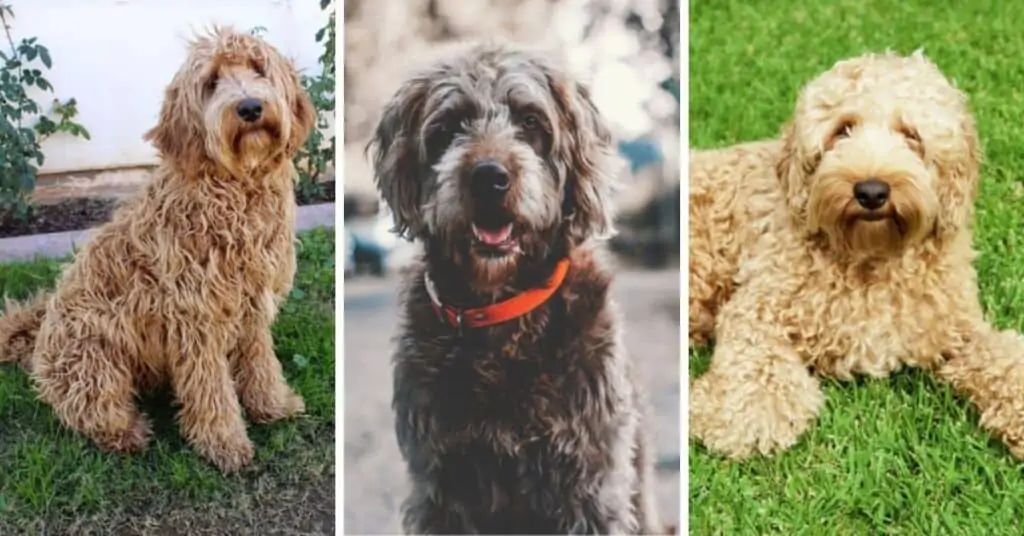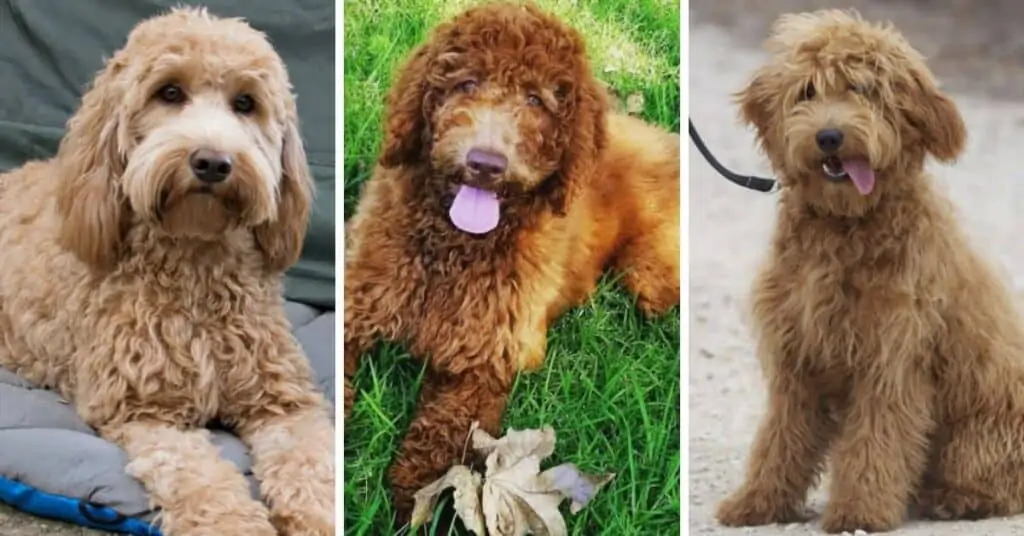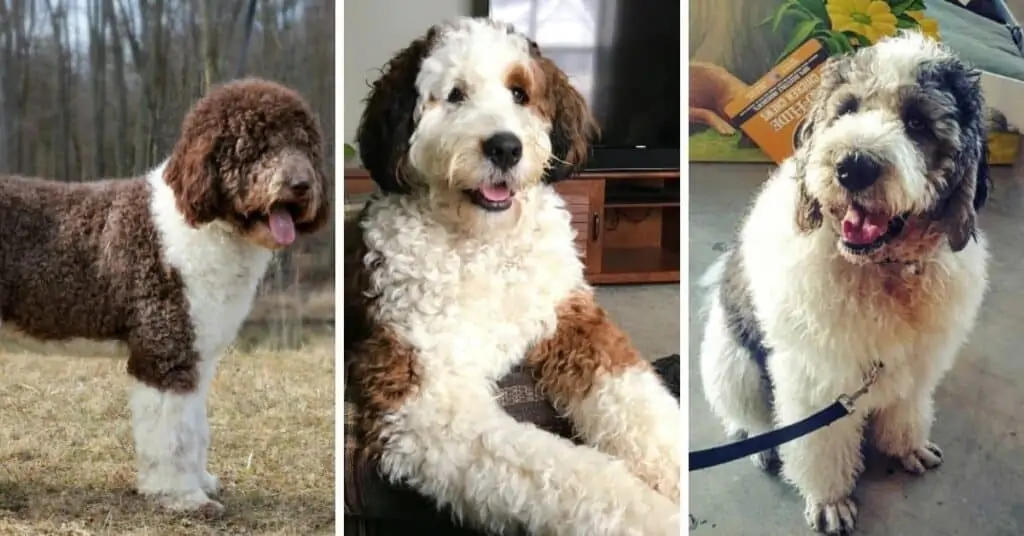
What is a Labradoodle Dog?
Heritage:
Labrador Retreiver Poodle Mix
Other Names:
Labrador Poodle Mix, Lab Poodle Mix
Lab Poodle Mix Breed History
Labrador Retriever Breed History:
The Labrador Retriever originates in Canada, but not from Labrador as its name would suggest. It actually called Newfoundland home, being employed on fishing boats to help retrieve fish that fell out of the nets. Not only was this breed adept at retrieving, but its otter-like tail, that can be used much like a rudder, and its short, dense, weather-proof coat made swimming in the icy Canadian waters an easy task for this breed.
In the early 1800s, English nobles on a trip to Canada spotted these dogs and returned home with them, giving them the false moniker “Labrador dogs.” The breed’s numbers have soared in both Europe and eventually the United States and Labs currently sit as the American Kennel Club’s most popular breed, a position it’s held since 1991.
Poodle Breed History:
While commonly associated with the French, the Poodle actually originated as a duck hunter in Germany over 400 years ago. In German, “pudelin” refers to the splashing in water that the dogs would do to retrieve waterfowl. The Poodle’s curly, weatherproof coat as well as its natural swimming ability and high intelligence made it an excellent retriever.
Eventually, Poodles made their way from the lake to the life of luxury as they were the breed of choice by French nobles, and eventually royalty across all of Europe. To this day, the Poodle is still the national dog of France. The entertainment industry then caught on to the Poodle’s showy looks, intelligence, and ease of trainability and gave them a prominent role in circus acts across the world.
While the Poodle started out as the “standard” variety, eventually the miniature and toy variations were bred. The Toy Poodle started in the United States in the early 20th century to be a city-dwelling companion dog. Due to the many positive personality traits and its hypoallergenic coat, Poodles are now commonly bred with a wide variety of other breeds to produce the “designer” hybrid dogs known and loved by many as “doodles.”
Labradoodle Breed History:
Often thought of as the original intentional Doodle, the Labradoodle breed originated in Australia during 1988. Wally Conron, the breeder, was requested to mix a Standard Poodle with a Labrador Retriever by the Royal Guide Dog Association of Australia in Victoria so that visually impaired people with allergies could have access to guide dogs. The result was a smashing success and Sultan, a dog from the original litter, served for 10 years as a guide dog for a woman in Hawaii.
While the Labradoodle continues to thrive as a breed to this day, a closely-related variation has also become increasingly popular—the Australian Labradoodle.
Lab Poodle Mix Appearance & Grooming
How Big Do Labradoodles Get?
A Labradoodle’s size is determined mostly by whether the Poodle in its lineage was a standard, miniature, or toy. On top of that, the gender of the puppy and the genetics of the parents play important factors as well. There are three “normal” sizes of Labradoodles—toy, mini, and standard.
Toy Labradoodles are the smallest of the bunch and usually weigh no more than 20 pounds and stand under 15 inches tall. A Miniature Labradoodle will weigh about 20-40 pounds and grow roughly 16-20 inches in height. The Standard Labradoodle, will typically weigh around 40-75 pounds and stand roughly 11-25 inches tall.
In addition to those three sizes, there are two “extra” sizes used to get specific. Teacup Labradoodles describe dogs on the super small end of Toy Labradoodles. Medium Labradoodles describe dogs somewhere in the middle size-wise of Standard and Mini.
Read More: Labradoodle Size Full Grown: How Big Do Labradoodles Get? (Teacup, Toy, Mini, Medium, Standard)
Labradoodle Dog Breed Coat & Grooming:
The coat of a Lab Poodle Mix can be solid or a mix of two or more colors, with chocolate, cream, and black being just a few options. Their coat comes in three types: the “wool” coat with tight curls, the “fleece” coat with looser curls, or the “hair” coat which is most like the Labrador Retriever’s.
A minimum of brushing once per week is required for a Labradoodle dog, with the ideal frequency being every other day if not every day for more curly-haired dogs.
Are Labradoodles Hypoallergenic?
Do Labradoodles Shed?
Due to the presence of the Poodle’s genes, Lab Poodle Mix puppies are sometimes promoted as being hypoallergenic and/or non-shedding. While this can be true, due to the unpredictability of genetics, there is no guarantee that any particular dog, or litter of dogs will be hypoallergenic. Some individuals’ allergies are more sensitive to certain breeds than other breeds, but there is no scientific evidence that shows that certain hybrid breeds are universally more or less hypoallergenic than others.
With that being said, as a rule of thumb, the larger the percentage of Poodle is in a dog’s heritage, the more likely they are to be hypoallergenic or non-shedding. So an F1BB Labradoodle (87.5% Poodle) is more likely to be hypoallergenic than an F1B Labradoodle (75% Poodle) which is more likely than an F1 or F2 Labradoodle (50% Poodle).
While doodle generations can be confusing, they don’t have to be. Check out our article on Labradoodle generations to learn more!
Lab Poodle Mix Health & Wellness
Labradoodle Dog Breed Lifespan:
A healthy and well-cared-for Labradoodle’s life expectancy is around 10-15 years.
Labradoodle Dog Breed Common Health Concerns:
Labradoodles may be susceptible to the common health problems of both the Labrador Retriever and the Poodle. However, due to the genetic diversity from crossing these two breeds, the result may be a lower chance of developing these inherited health concerns.
Read More: Labradoodle Health Issues: 8 Common Labradoodle Health Problems to Look Out For!
Some of the more common genetic disorders to be on the lookout for in the Poodle Lab Mix include Hip Dysplasia, Elbow Dysplasia, Eye Diseases, Hypothyroidism, Addison’s Disease, and Progressive Retinal Atrophy.
Due to the cost of treating these common health concerns, we highly encourage all dog owners invest in pet insurance. We recommend getting a free online quote from Healthy Paws Pet Insurance.
Lab Poodle Mix Temperament & Personality
Labradoodle Dog Breed Behavioral Traits:
Labradoodles have a unique combination of gentleness and joyfulness that make them adored by many. They’re extremely sociable and good with both pets and children. However, be careful with young children or elderly family members as their bursting energy can often result in jumping which could accidentally knock young or older people over.
Overall, due to their eagerness to please, great temperament, and ease of trainability Labradoodles make a great choice for first-time dog owners.
Labradoodle Dog Breed Activity Requirements:
Labradoodles are active dogs which require at least 60 minutes of exercise each day. Apartment living is not suitable for this breed and large yards will make this retrieving fanatic happiest. A dog door with a fenced yard may be a good investment for this breed.
Read More: Labradoodle Exercise Needs by Age & Size
Lab Poodle Mix Pictures











